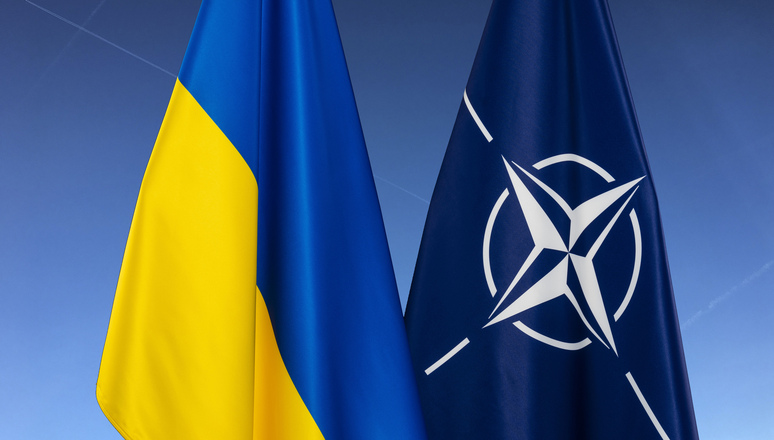On 24 February 2022, Russian troops invaded Ukraine, marking a significant escalation in a conflict deeply rooted in historical tensions and geopolitical rivalries. The origins of the current war can be traced back to the post-Soviet era when two contrasting perspectives dominated Western discourse on NATO’s expansion: a messianic belief in the spread of liberal democracy and a realist emphasis on maintaining a balance of power. As the Soviet Union disintegrated, proponents of the first school advocated for the inclusion of former Soviet states into NATO, interpreting such moves as a step towards civilization and democracy. Conversely, realist thinkers like George F. Kennan and Henry Kissinger cautioned against the dangers of ignoring other worldviews and power dynamics, particularly considering Russia’s nuclear capabilities. The pact struck between US Secretary of State James A. Baker and Gorbachev in 1990 allegedly guaranteed that NATO would not expand eastward, a commitment that has remained contentious amid subsequent NATO enlargements that disregarded this understanding.
As NATO began its eastward expansion in the late 1990s under the Clinton administration, Russia’s earlier weakness was exploited, leading to admissions of countries that had historically been part of its influence. The admission of Poland, the Czech Republic, and Hungary marked the formal start of NATO’s enlargement, celebrated by proponents as a victory for democracy and human rights. Kennan labeled this move a “tragic mistake,” highlighting that dismissing Russia’s long-standing security concerns would pave the way for future conflict. The situation grew more precarious with the ambition to include Ukraine in NATO by 2008, given its profound historical ties to Russia. Ukraine’s geographical significance further complicated matters, creating a contentious backdrop for its aspirations towards NATO membership and drawing fierce opposition from Moscow.
The internal dissolution in Ukraine following the 2014 unrest became a pivotal moment, leading to the ousting of President Viktor Yanukovych after he rejected an association agreement with the EU. Protests erupted in favor of deeper ties with Europe, and while Western nations hailed the subsequent changes as democratic progress, Russia characterized the events as a coup supported by Western powers. Consequently, Russia annexed Crimea and backed separatist movements in Eastern Ukraine, marking a significant military escalation reminiscent of earlier conflicts, such as the 2008 war in Georgia. In that case, Russia had interjected itself militarily after Georgia attempted to exert control over territories with Russian-backed separatists, demonstrating a pattern of responding aggressively to perceived threats from neighboring states aligning with the West.
As tensions escalated over the following years, Russia amassed troops along its border with Ukraine in 2021, provoking a mix of speculation and warnings regarding potential military action. Despite initial skepticism, by January 2022, U.S. intelligence reached a consensus that an invasion was imminent, leading to diplomatic efforts to deter Putin. However, Russia persisted in demanding formal guarantees preventing Ukraine from joining NATO, a request the U.S. refused to accommodate. This deadlock culminated in Russia’s formal invasion on 22 February 2022, unleashing violence and instability throughout the region. The refusal to acknowledge the realities of NATO’s expansion and the 2014 coup only served to fuel Russian narratives, further entrenching the belief that the West had violated commitments made in the previous decades.
The ongoing conflict has led to three potential scenarios regarding its resolution. The first scenario involves Ukraine’s potential capitulation, which hinges on diminishing support from the West and the military’s ability to maintain defense against Russia. The prospect of a frozen conflict emerges as a more favorable second scenario. This would involve both parties negotiating a ceasefire to halt hostilities, although the territorial concessions required from Ukraine would likely be contentious. A peace deal might center on broader commitments, including security guarantees and the potential for Ukraine’s integration into Europe, but Russia’s continuation of territorial gains complicates this possibility. The third scenario involves escalation, characterized by increased military confrontations and the potential use of nuclear weapons in response to perceived threats from NATO, signaling the dire stakes involved in the conflict.
As the war continues into a new phase, the international community faces pressing concerns regarding the balance of power in Eastern Europe. Each scenario presents significant implications for not only Ukraine but also for stability in Europe and the broader geopolitical landscape. The conflict reflects deeper historical narratives around national identity, security, and the spectrum between Western ideals and Russian imperial ambitions. Considering this fraught context, incoming leaderships, such as potential changes in the U.S. administration, could shape the future trajectory of the war, urging the global audience to rethink strategies that prioritize diplomacy over military solutions while acknowledging the complexities involved in resolving these longstanding tensions. The engagement of outside powers, predominantly the U.S. and its allies, against a backdrop of Ukrainian resilience poses vital questions about the roles of influence and intervention in a crisis that embodies a clash of divergent worldviews and visions for the future of regional stability.

